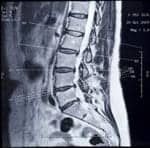A recent news release from the Stanford School of Engineering reports that a team of researchers have pinpointed a new algorithm intended to improve the speed and accuracy of neural prosthetics that control computer cursors. The algorithm, ReFIT, was reportedly used in side-by-side demonstrations with rhesus monkeys. According to researchers, cursors controlled by the algorithm doubled the performance of existing systems and approached the performance of a real arm.
The release notes that the system relies on a silicon chip implanted into the brain and engineered to record “action potentials” in neural activity from an array of electrode sensors and sends data to a computer. Researchers explain that the frequency with which action potentials are generated provides the computer vital information about the direction and speed of the user’s intended movement. The release also notes that the system has the ability to make unpredicted adjustments while guiding the cursor to a target, in the same manner that a hand and eye would work together to move a mouse-cursor onto an icon on a computer desktop.
Researchers reportedly tested the system by tasking monkeys with mentally directing a cursor to a target and holding the cursor on the target for half a second. The results suggest that the path of the cursor from the starting point to the target achieved 75% to 85% of the speed of real arms.
The release indicates that the next step for the research team centers on translating these results into a clinical trial with paralyzed patients.
[Source: Stanford School of Engineering]



